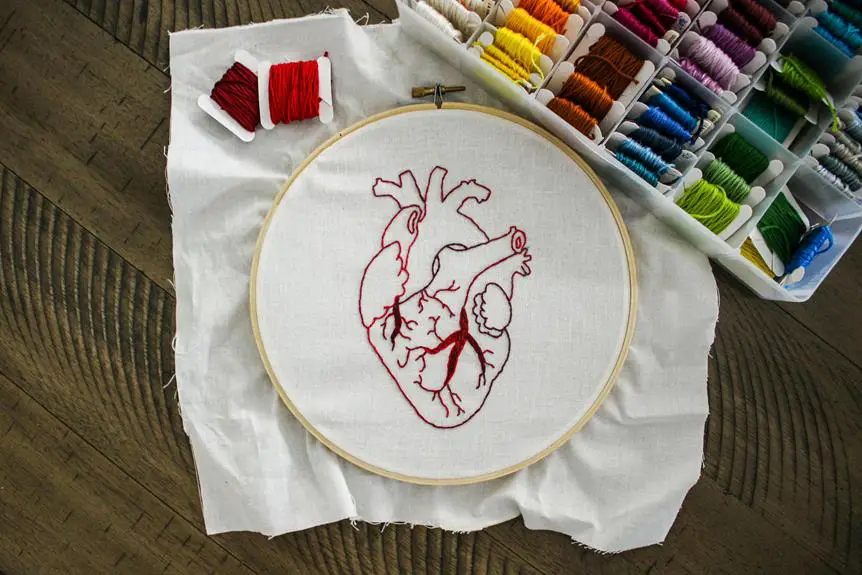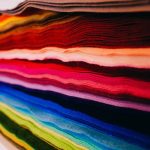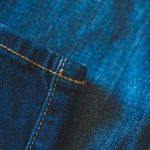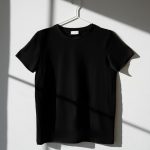When you're faced with the choice between broadcloth and twill, it's essential to consider what fits your needs best. Broadcloth's lightweight and smooth texture makes it a go-to for warm weather and formal events, while twill's durability and unique weave cater to cooler climates and casual outings. But how do these characteristics play out in real-life scenarios? Understanding the key differences can help you make an informed decision, but there are nuances that might surprise you. Let's explore what each fabric brings to the table and how it aligns with your style.
Table of Contents
Overview of Broadcloth
Broadcloth is a tightly woven fabric known for its smooth texture and versatility in various clothing applications. You'll often find it used in dress shirts, blouses, and even tailored suits. The fabric's tight weave gives it a crisp appearance, making it an excellent choice for formal and professional attire.
When you choose broadcloth, you're not just selecting a fabric; you're opting for durability and ease of care. It's typically made from cotton, polyester, or a blend, offering a breathability that's perfect for everyday wear. Plus, its smooth surface resists wrinkles, so you won't have to worry about looking disheveled throughout the day.
Broadcloth also comes in a wide range of colors and patterns, allowing you to express your personal style effortlessly. Whether you're dressing up for a business meeting or attending a casual gathering, this fabric adapts well to different occasions.
Its versatility means it pairs well with various fabrics, enhancing your wardrobe's overall functionality. So, if you're searching for a reliable and stylish option, broadcloth is definitely worth considering for your next clothing project.
Overview of Twill
Twill is a durable fabric characterized by its diagonal weave, which gives it a unique texture and enhances its strength. This weaving technique creates a pattern of raised diagonal lines, making twill not only sturdy but also visually appealing. You'll often find twill in various clothing items, from jeans to jackets, due to its ability to withstand wear and tear.
One of the standout features of twill is its versatility. It can be made from a variety of fibers, including cotton, wool, and synthetic materials, allowing it to cater to different needs and preferences. Depending on the type of fiber used, twill can be lightweight or heavier, making it suitable for both warm and cool weather.
You'll also appreciate twill's resistance to wrinkles and creases, which means you won't have to iron it as often as other fabrics. This quality makes it a popular choice for those who lead busy lives.
Additionally, twill fabrics tend to drape beautifully, giving garments a flattering silhouette. Overall, twill combines functionality with style, making it an excellent choice for your wardrobe.
Key Differences Between Fabrics
When comparing fabrics, understanding the key differences between broadcloth and twill can help you make informed choices for your clothing and home textiles.
Broadcloth is a tightly woven fabric with a smooth finish, often made from cotton or a cotton blend. This gives it a crisp, clean look, making it ideal for dress shirts and formal wear.
On the other hand, twill features a distinct diagonal weave, which adds texture and durability. You'll notice that twill fabrics resist wrinkles and stains better than broadcloth, making them a practical choice for casual attire.
In terms of weight, broadcloth is generally lighter than twill, which can feel heavier and more substantial. This difference in weight affects how each fabric drapes; broadcloth tends to have a more structured appearance, while twill offers a softer, more relaxed look.
Additionally, broadcloth usually has a more lustrous finish compared to the matte look of many twill fabrics.
Finally, consider their breathability—broadcloth often feels cooler against the skin, whereas twill can provide more warmth, making it suitable for cooler weather.
Knowing these differences can guide your fabric selection for various applications.
Pros and Cons of Each
Considering the pros and cons of each fabric can help you decide which one best suits your needs and style preferences. Broadcloth and twill each offer unique advantages and disadvantages that can influence your choice.
Pros of Broadcloth:
- It's lightweight and breathable, making it ideal for warm weather.
- The smooth texture gives a polished look, perfect for dress shirts and formal wear.
- It's generally more affordable compared to twill.
Cons of Broadcloth:
- It's less durable than twill, so it may wear out faster.
- The fabric can be prone to snagging and tearing.
Pros of Twill:
- Twill's diagonal weave provides increased durability, making it long-lasting.
- Its heavier weight makes it warmer, great for cooler weather.
- The distinct texture adds visual interest to garments.
Cons of Twill:
- It can be heavier and less breathable than broadcloth.
- Twill usually comes at a higher price point.
Choosing the Right Fabric
Choosing the right fabric for your needs means evaluating factors like climate, occasion, and personal style preferences. Broadcloth and twill each have distinct characteristics that can suit different situations.
Consider the following table to help you make your decision:
| Factor | Broadcloth | Twill |
|---|---|---|
| Climate | Lightweight, breathable; ideal for warm weather | Heavier, warmer; great for cooler climates |
| Occasion | Formal events; crisp and polished look | Casual to semi-formal; versatile with a relaxed vibe |
| Care | Generally easier to clean; wrinkle-resistant | Requires more care; may wrinkle more easily |
When you know the occasion, you can choose fabrics that enhance your look. Broadcloth works well for dress shirts and tailored suits, while twill suits casual outings and relaxed fits. Personal style also plays a role; if you prefer a smooth finish, go for broadcloth, but if you like texture and durability, twill might be your best bet. Take the time to assess these factors, and you'll find the fabric that best meets your needs.
Frequently Asked Questions
Can Broadcloth Be Used for Formal Wear?
Yes, you can definitely use broadcloth for formal wear. Its smooth texture and crisp finish give a polished look, making it suitable for dress shirts, suits, or other elegant attire. Just choose the right color and pattern!
Is Twill Fabric More Durable Than Broadcloth?
Yes, twill fabric's diagonal weave creates a stronger structure, making it more durable than broadcloth. If you're looking for longevity in your garments, twill's resilience will serve you better in various applications and wear.
How Do I Care for Broadcloth Garments?
To care for broadcloth garments, machine wash them in cold water and use a gentle cycle. Don't bleach, and tumble dry on low or hang to dry. Iron on medium heat if necessary for wrinkles.
Are There Eco-Friendly Options for Twill Fabric?
Yes, there are eco-friendly options for twill fabric! Look for organic cotton, recycled polyester, or linen blends. These materials reduce environmental impact while providing the durability and style you love in twill garments.
Can I Find Broadcloth in Different Colors and Patterns?
Yes, you can find broadcloth in various colors and patterns. Many fabric retailers offer a wide selection, so you'll easily discover options that suit your style and project needs, whether you prefer solids or prints.
- What Fabric Is Chino? Unveiling Chino Material - June 20, 2025
- What Fabric Are Chinos Made From? Exploring Chino Fabric - June 20, 2025
- Chino: Fabric or Style? Understanding the Difference - June 20, 2025







